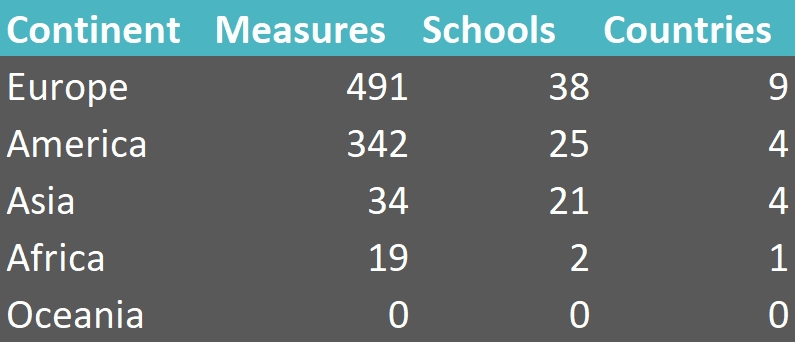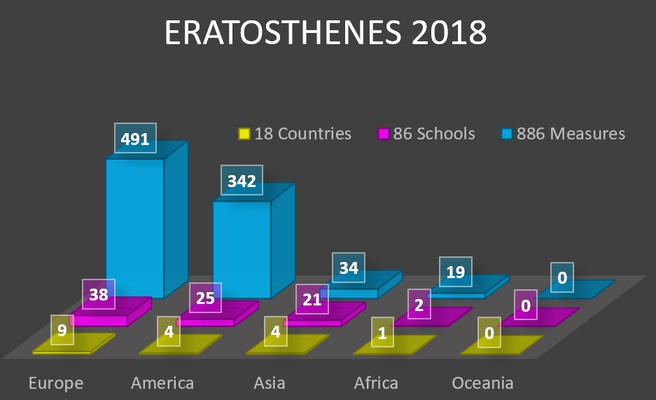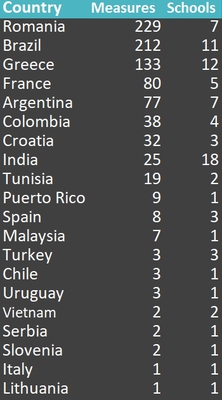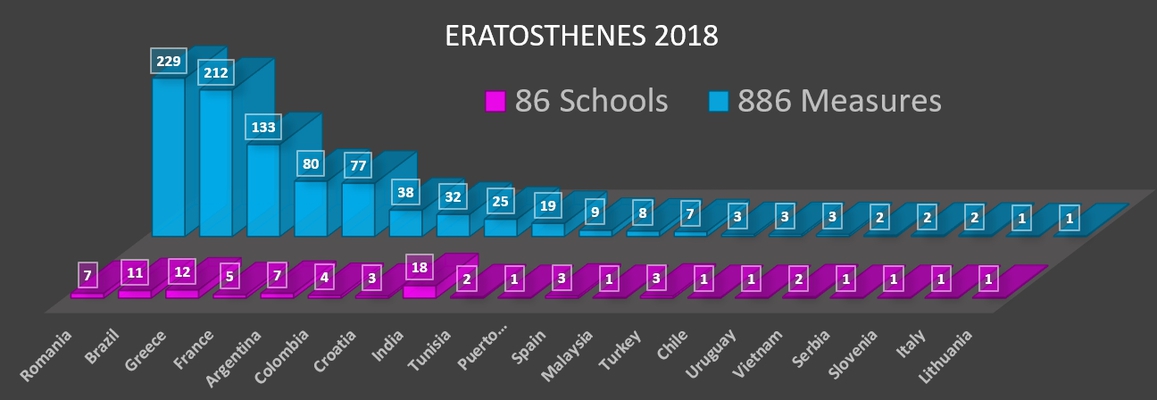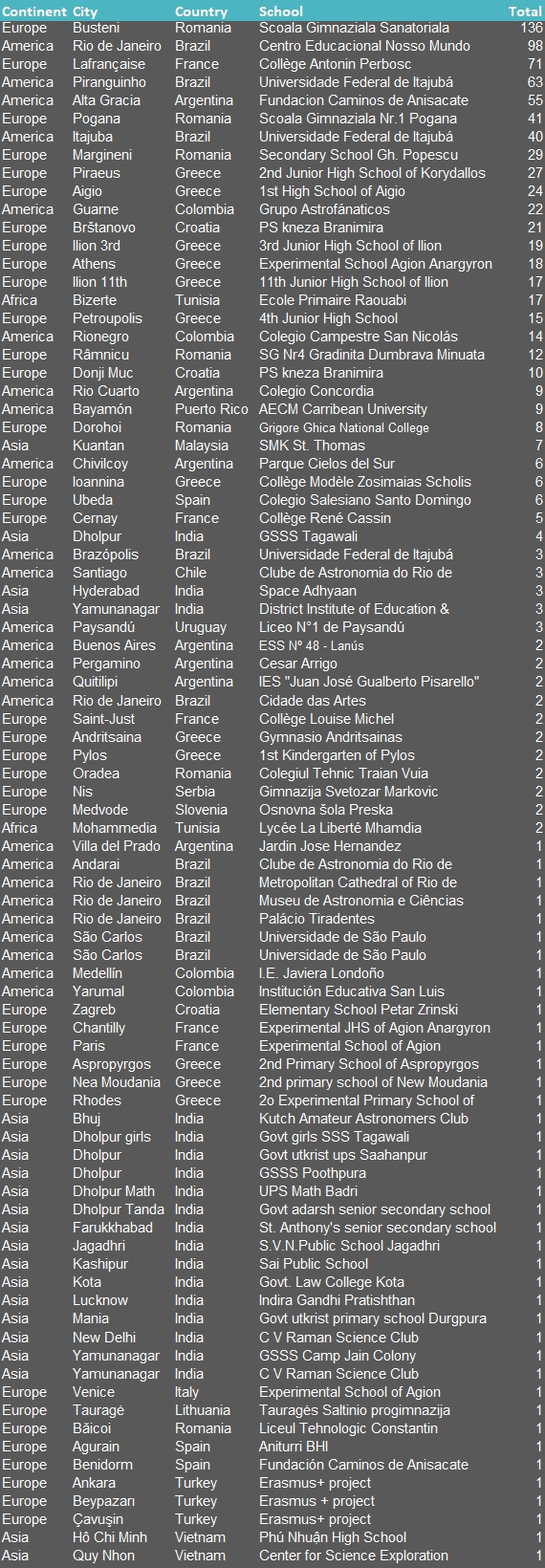General evaluation
Participate to the teachers’ discussion in the forum.

1.Pedagogical innovation and creativity
A pedagogical module in 5 sequences and 6 languages proposes the activities related to the general objective for an annual progress. It can be adapted the school specific conditions (curriculum, level of students) and mainly related to STEM and ICT competences
The general organization: Schools and students’ presentations, organization of the storage of the images (materials and Google drive), coordination of the measures, annual progress is explained in the work process page
Interactions among students are encouraged in forums and best photo voting. Comparison of the experimental devices (Gnomons) can identify the issues and propose solutions to improve the measures
2. Curricular integration
All the activities and their objectives can be integrated to any school curriculum (kindergarten, primary, middle and high school). They are mainly related and evaluated to the key competences in STEM and ICT.
The general objective allows a multidisciplinary approach (arts, history, foreign language). The productions are archived in the transdisciplinary activities page of the Eratosthenes Earth Experiment group.
3. Partner school communication and interaction
The Students of the “Enter the data” task force communicate in real time, sharing their data measurements in the google sheet. Depending on the different time zones, the western partner can immediately draw the Geogebra figure.
Taking into account the number of days of measurements, the communication and assessment of the measures, we made few videoconferences this year, without nevertheless reducing the motivation of the pupils
In the calendar of collaborative measures, important events are fixed and unavoidable astronomical dates. A strategy of communication between teachers for the coordination of the measures uses social networks.
4. Collaboration between partner schools
The students are organized in International teams called task forces. Their role is to accomplish experimental or ICT elementary tasks that contribute to the achievement of general objective: calculate the circumference of the Earth.
The results are published in the daily pages and in the 12 monthly newsletters
5. Use of technology
The common ICT tools are adapted to the different activities
Creative tools for the presentations (Powerpoint, Windows Movie Maker, Kizoa )
The choice of Google drive for the measurements (google sheets for data and google slides for photographs) is justified in the work process
A tutorial explains how to draw the Geogebra geometric figure from the data sheet, thereby promoting their autonomy
The registered students have access to the private publications of the Twinspace. For ease of use by students, the edition of the data sheet is unrestricted and teachers manage student access to their folder in google drive.
The teachers obtain the parents’ agreement for the publications of the photographs. They set the behaviour rules about privacy for publications in Padlets (Personal informations are limited to the private forums). They make sure that no document protected by copyrights is published.
6. Results, impact, and documentation
The general objective (Demonstrate that the Earth is round and calculate its circumference) is totally achieved. Although simple, this goal is increasingly challenged by our students, misinformed on social networks by conspiracy theories promoted by the Flat Earth Society.
The newletters and the other special events are disseminated by our institutional partner “La Main à la Pâte”. The educational documents are shared with the Scientix community
The ancient archival work of Eratosthenes from Alexandria provided by the website eratosthenes.eu ensures the sustainability of the eTwinning project since 2005.
In addition to the STEM competence, the evaluation by the students demonstrates the transdiciplinary of the project and their progress in Multilingual / Digital / and Personal, social and learning to learn competences.

Transdisciplinary
Distribution of the disciplines of the 51 teachers.
(the 10 invited teachers, from Asia and America are not taken into account)
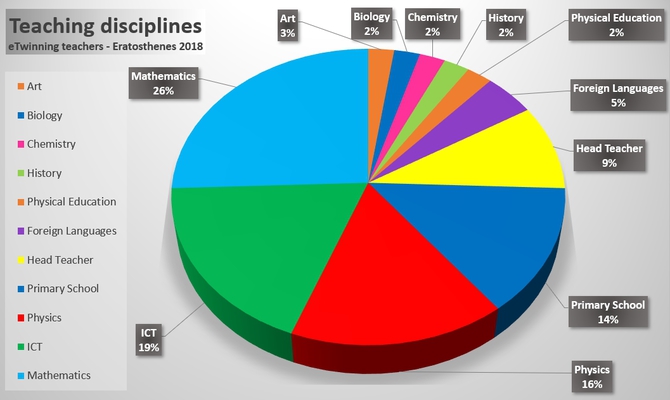
Schools teams


Students' evaluation (results on 26 january)
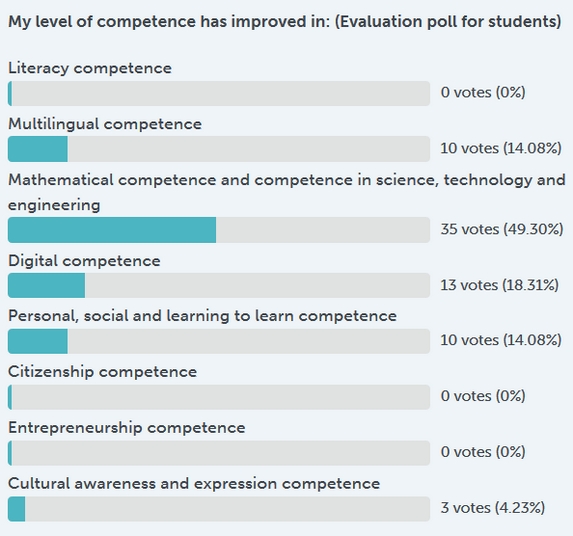

Statistics
